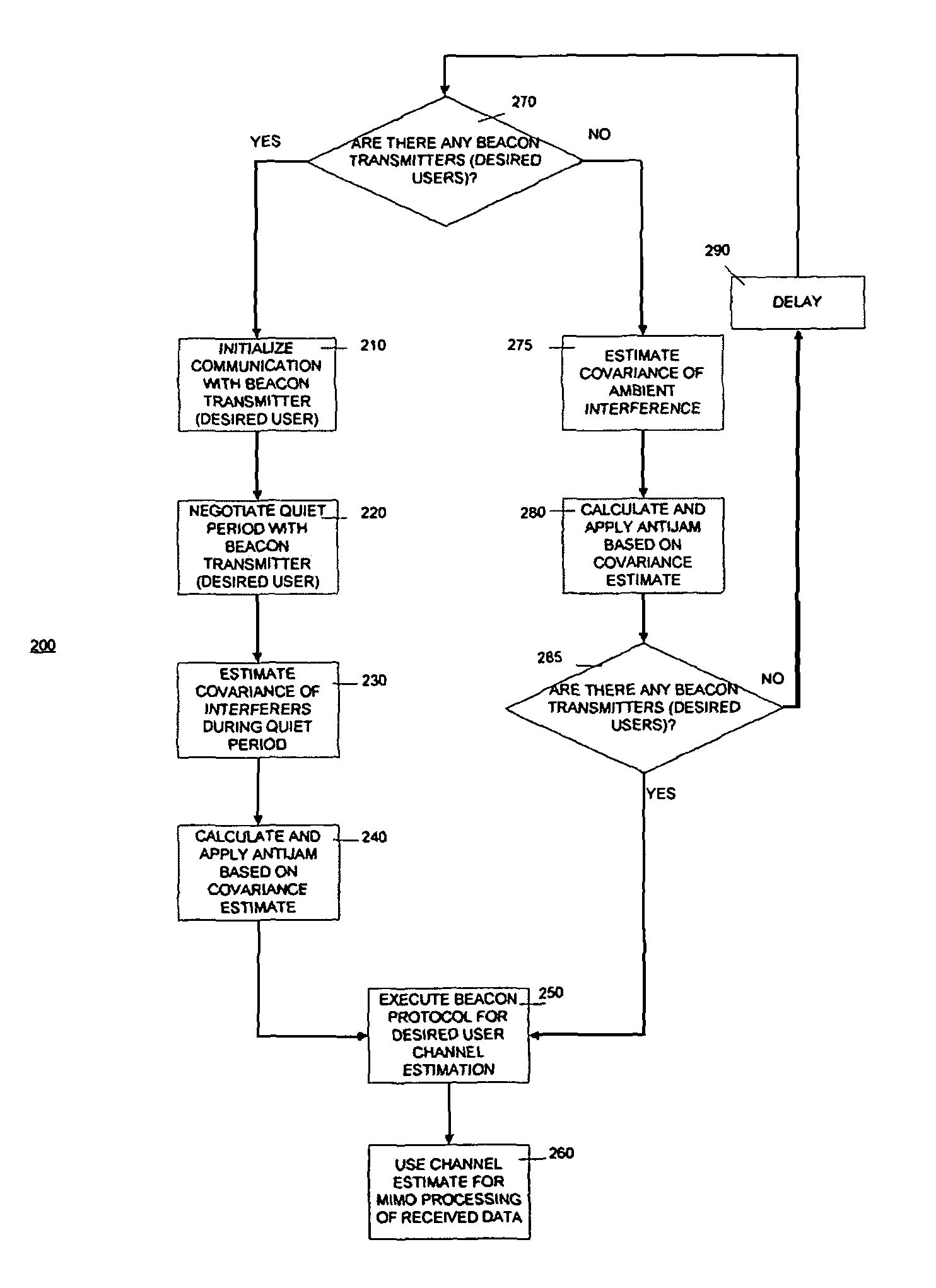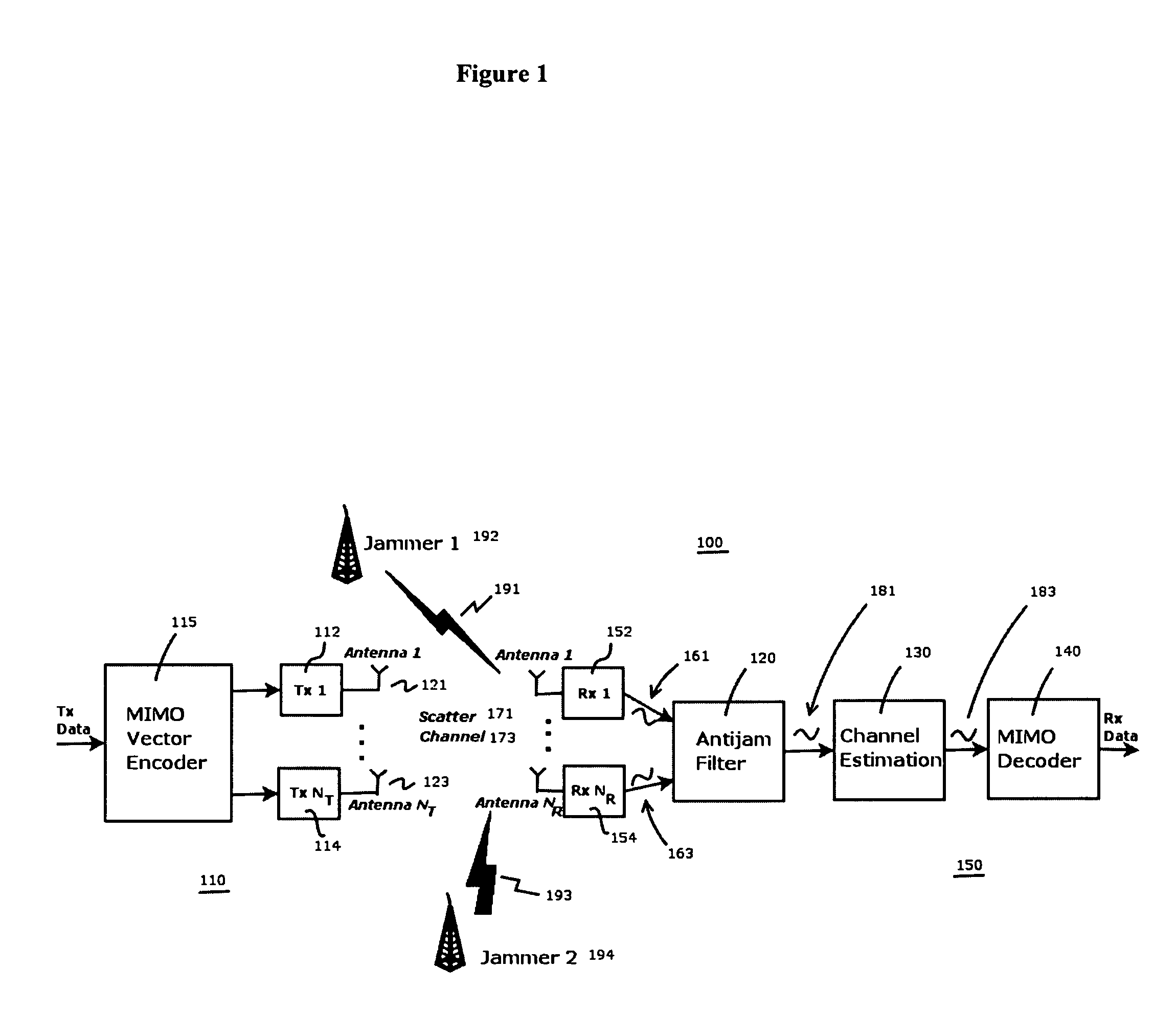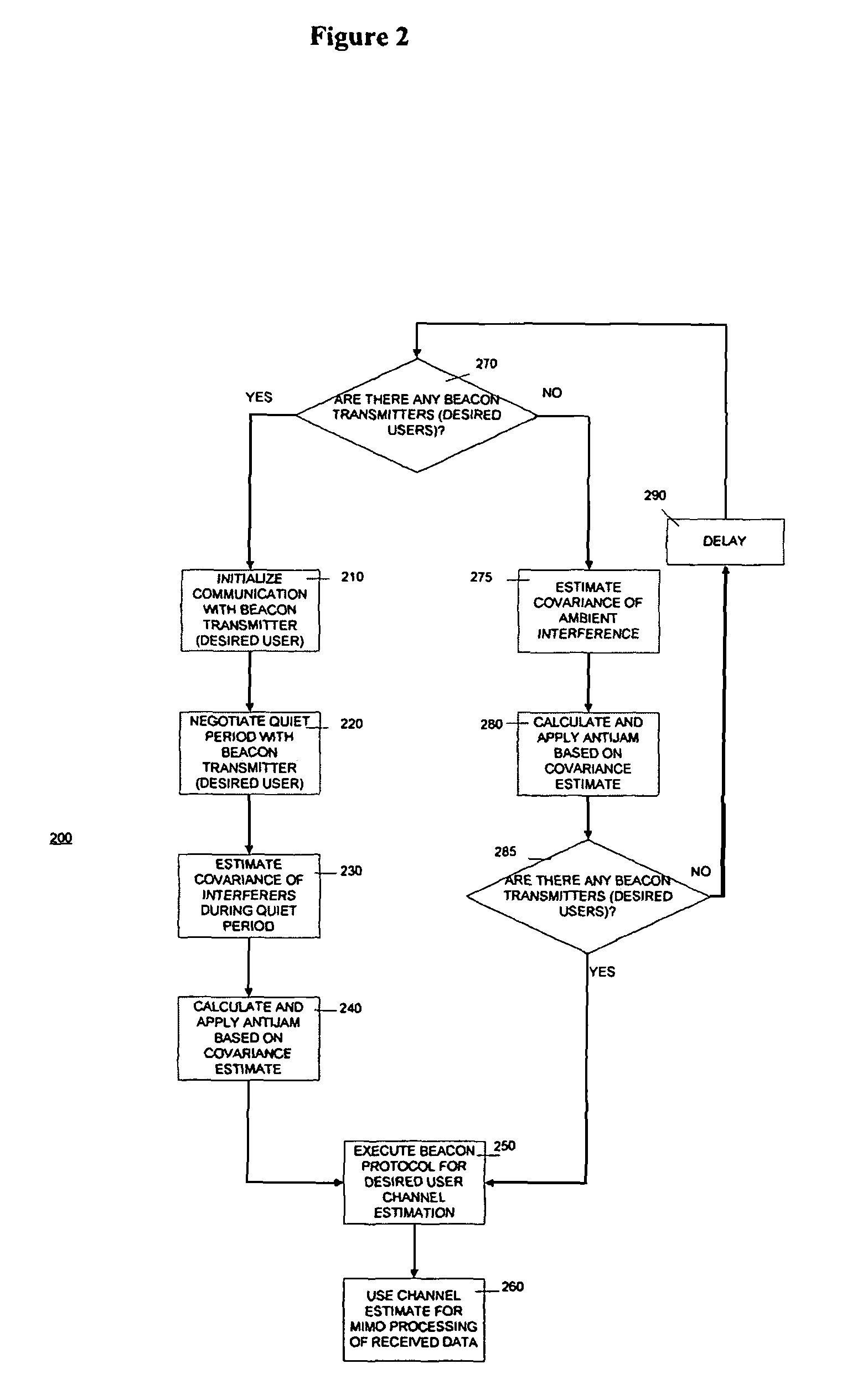Antijam filter system and method for high fidelity high data rate wireless communication
a filter system and high data rate technology, applied in the direction of instruments, polarisation/directional diversity, burglar alarm mechanical actuation, etc., can solve the problems of loss of fidelity, difficult to detect reliably low strength signals, limited data rate, etc., to improve high fidelity, high speed wireless data communication, and remove interference
- Summary
- Abstract
- Description
- Claims
- Application Information
AI Technical Summary
Benefits of technology
Problems solved by technology
Method used
Image
Examples
Embodiment Construction
[0040]The antijam filter herein allows improved high speed wireless data communication by filtering interference signals from spatially multiplexed received signals without the use of a training sequence or concurrent feedback for estimating the SINR, or having prior knowledge of the desired user(s) or the code for demodulating the received signals, and can be used in modular fashion with most MIMO wireless reception systems. Spatial Multiplexing provides independent streams of data transmitted simultaneously in a wireless communication transmitter-receiver pair, each having a plurality of antennas. The filter is especially effective when the receiver of the wireless communication system has more antennas than the transmitter, and this excess of the receiver antennas equals or exceeds the number of sources of interference signals. In addition to wireless communication systems employing MIMO, other similar two way wireless communication systems, such as OFDM and CDMA, also gain from ...
PUM
 Login to View More
Login to View More Abstract
Description
Claims
Application Information
 Login to View More
Login to View More - R&D
- Intellectual Property
- Life Sciences
- Materials
- Tech Scout
- Unparalleled Data Quality
- Higher Quality Content
- 60% Fewer Hallucinations
Browse by: Latest US Patents, China's latest patents, Technical Efficacy Thesaurus, Application Domain, Technology Topic, Popular Technical Reports.
© 2025 PatSnap. All rights reserved.Legal|Privacy policy|Modern Slavery Act Transparency Statement|Sitemap|About US| Contact US: help@patsnap.com



